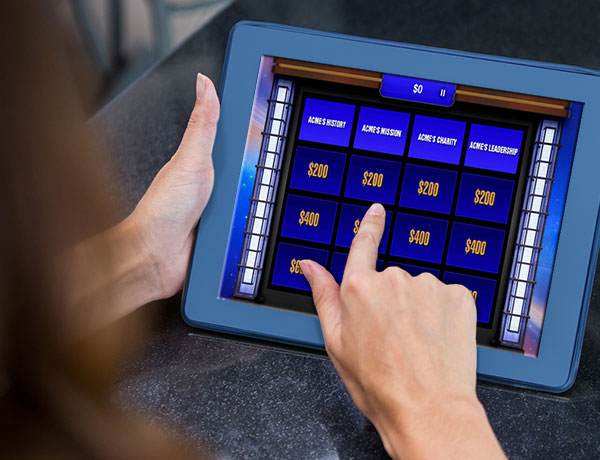Updated 11/12/24
Games play an important role within the learning & development curriculum by providing learners a place to actively and passionately engage in training material. The intellectual and emotional wrestling which occurs when playing a game is the very space where learning occurs and knowledge is driven into long-term memory for future retrieval at the right time and place.
The 11 game types in The Training Arcade® present the educator with the opportunity to employ a wide range of visual and auditory assets to make the training games fun, exciting, and relevant to their employees’ job performance. As shown in this presentation at our January 2022 User conference “Question Types, Rich Media, and Advanced Feedback”, game creators can customize their games with images, videos, and audio clips to optimally enhance the game content with the course material and the needs of the learner.
The underlying physical mechanics required to play a game, such as watching, listening, and keyboarding, present the educator with the opportunity to tap a wide range of learning modalities and even simulate the very senses and actions used on the job, such as customer service representative who needs to listen to an irate customer.
The 11 game types also enable the instructor to match the right game mechanic with the learning objectives of the course with which it is associated. A course focused on showing good judgment under stress is more appropriate for our Scenarios game type vs the “know it or not” game mechanic of Jump. For more information on aligning the game type for your learning needs, please jump to this link.
The variety of game types also permits the game creator to select the one that best matches the employee demographics. A millennial audience of learners who work primarily on the road and have very short amounts of time for learning might best be served with a five-minute Jump game type vs a fifteen-minute JEOPARDY! game.
While we do provide a wide variety of game types and game content to match the goals of the learning experience and the learner, there are inherent limitations created by the very engaging nature of games. If a learner is visually impaired, are they able to see and control the Jump character or move tiles around in Sort-It; or, if a learner is hard of hearing, are they hearing the different sounds in Recall?
Currently, we advise our subscribers to create multiple versions of games with the same content presented in different formats and to allow the player to select the one they wish to play. For example, the questions and answers presented in a Jump game which contains audio clips and video assets could be presented in a Jump game with pure images and text.
We are actively integrating better accessibility features in all our games, including additions of text to speech, screen reader enablement, tab through select, audio cues, multiple game color schemes, new game types where time is not a factor, and support of device zoom functionality!


